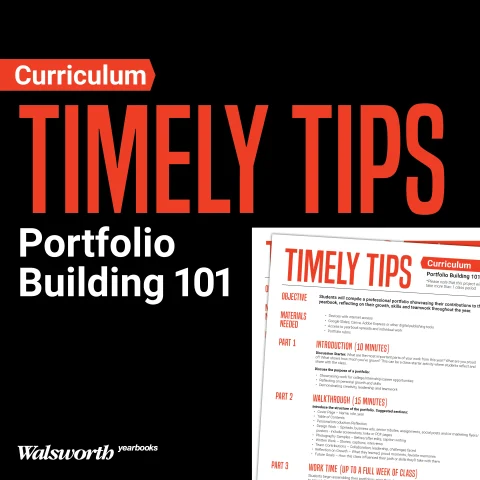Yearbook advisers who lead after-school clubs face unique challenges, including organization and continuity, which are key to a successful program and reducing stress. Clubs typically meet less often and at irregular times, and they also compete with other clubs, sports, and events for student attendance.
To combat these challenges, you should consider taking the following steps for next year.
Create a yearbook club staff member commitment contract.
Create a simple one-page document outlining the expectations and commitments of yearbook club members. Distribute this document at your first yearbook meeting, and make it clear from day one that yearbook involves dedication and commitment year-round.
Here is some sample language you can include in your student commitment contract:
Congratulations on becoming a member of the yearbook committee!
We have a long road ahead of us, and we will need to work hard and dedicate ourselves to making a high-quality yearbook for all students in our school. We will meet every Tuesday from 2:45-4 p.m. to work on the yearbook until mid-April. Attendance is mandatory unless excused by a note from a parent. Each meeting, you will be assigned a task to complete. You may also work on tasks from your computer. If you fail to attend a meeting, you will be excused from yearbook duties. We trust in our staff and expect dedication to the yearbook throughout the school year.
In addition to this contract, you will want to note which students are involved in other sports and activities and make a list of when these take place. You might consider making it a rule that nobody participating too heavily in other activities can become an editor, although they can be a contributing staff member.
Interview each aspiring staff member. This helps you learn about each student’s skills, availability, and where to place them on the staff, and it also helps students take the process seriously and value admission to your yearbook club.
Need an application to distribute to your student body? Use our staff application template to get started.
Establish a firm editorial staff structure for your yearbook club.
Consider using one of two structures to organize your yearbook staff: the Sectional Editors Model or the Functional Editors Model.
With the Sectional Editors Model, you create editorial positions based on content sections in the book (e.g., sports editor, student life editor, clubs editor, academics editor). These editors will supervise the photography, writing, and design of their sections and may report to an editor-in-chief or to the yearbook adviser directly. This model is best for staff members who want to be involved in many aspects of yearbook.
The Functional Editors Model, on the other hand, creates editorial positions around yearbook staff functions (e.g., photography editors, content editors, design editors). These editors will be responsible for their tasks throughout the entire book, rather than focusing on just one section. This model is best for staff members who wish to specialize in certain yearbook tasks.
Give them work.
Assign tasks to students based on their interests and skill sets to keep them motivated and engaged. Failing to do so may cause them to lose interest and drop out of yearbook. This can also lead to a lack of work for some staff members, causing them to leave and join other clubs.
Foster a fun, professional and team-oriented yearbook culture.
Avoid cliques on the yearbook staff to prevent setbacks. Encourage team work, communication, and collaboration to ensure good coverage and a consistent look for the yearbook. Yearbook work should be organized like a professional editorial staff.
Disrupt this by keeping things fun, like having students take turns sharing their music, assigning secret admirers to exchange supportive notes and gifts, and having group pizza parties and off-campus retreats such as a staff trip to a newspaper. Just because you do not have yearbook as a class does not mean you cannot treat your club as such.
For more team-building opportunities for your club, order your copy of Yearbook Suite’s Staff Management Through Team Building to get a wide range of different icebreakers and team-building strategies to strengthen the bond of your team.
Establish continuity among your yearbook club.
The last thing you want is to face an entirely new staff year and after year, as this greatly increases your workload and prohibits you from getting a jump on the year. Hold a yearbook interest meeting in the spring to recruit new staff members before the fall club fairs. Invite the entire student body to attend. You can also send interested new members to a summer workshop and have them shadow current members in the spring to gain experience for the following year. This helps to avoid starting with a new staff each year and reduces workload.
By taking all of the above steps, you can create a great yearbook club that rivals any yearbook class and manage any additional workload or challenges that an after-school club typically presents.







